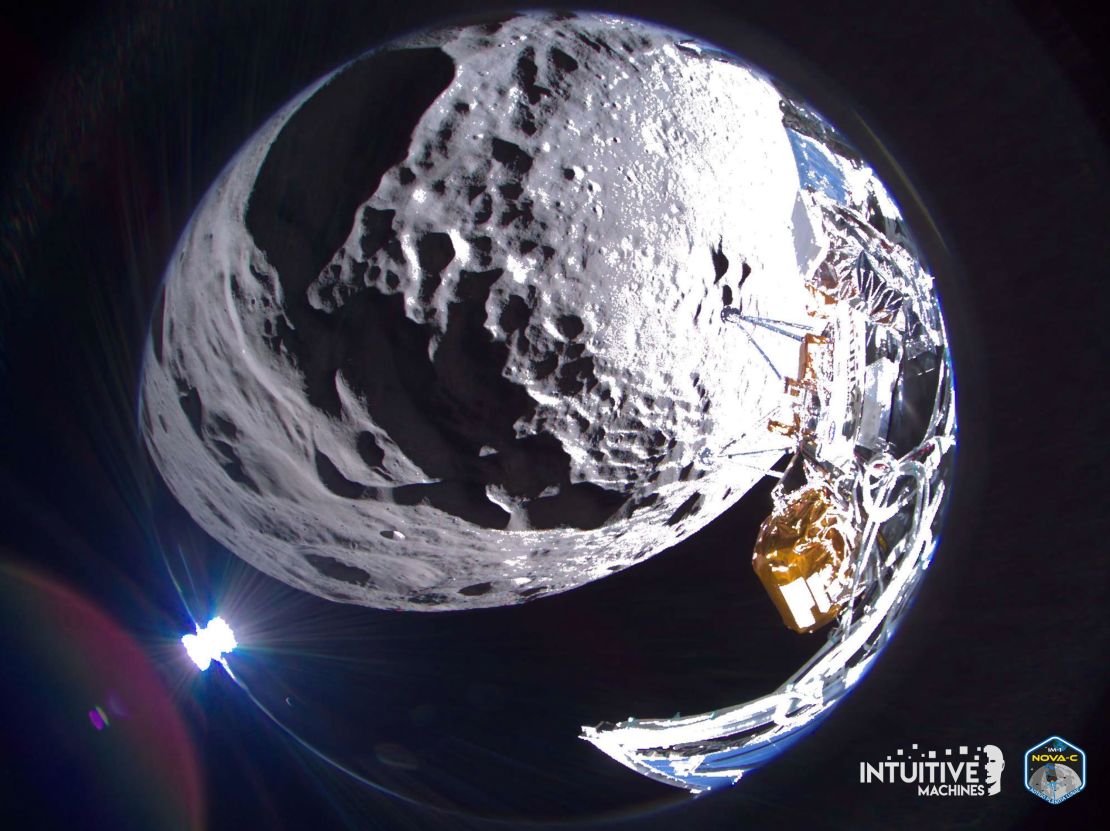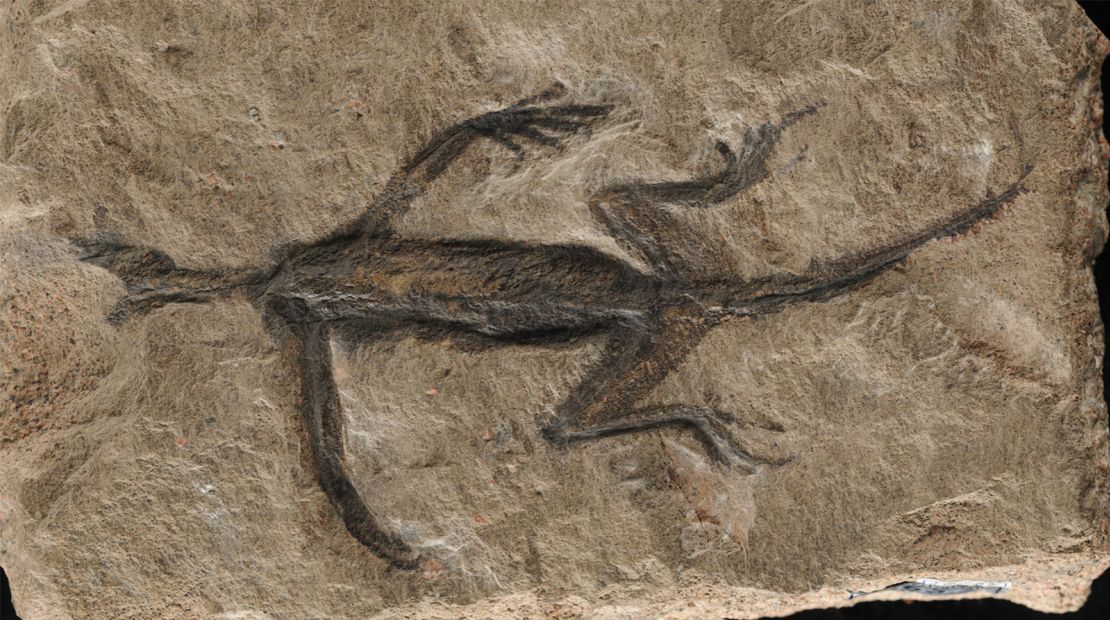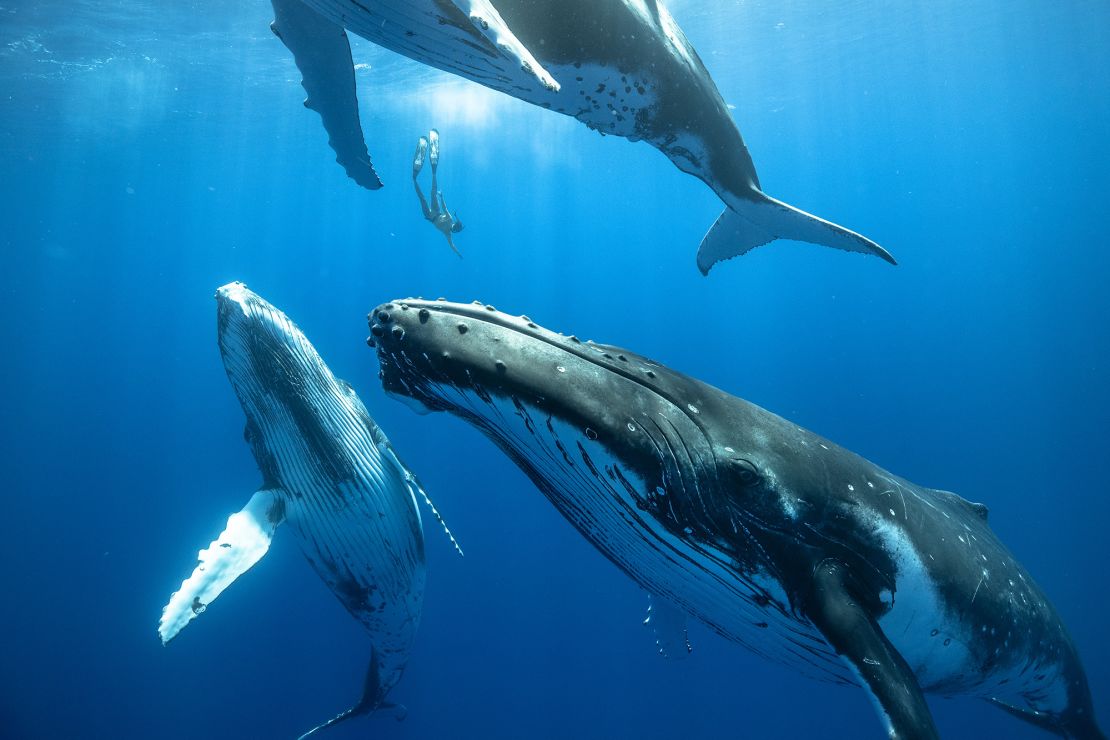Editor’s note: A version of this story appeared in CNN’s Wonder Theory science newsletter. To get it in your inbox, sign up for free here.
Gazing at February’s full snow moon, which will illuminate the night sky this weekend, may feel a little more special than usual after a dramatic lunar landing.
Just over a week after launching, the uncrewed Intuitive Machines’ IM-1 lander, also called Odysseus or “Odie,” successfully touched down near the lunar south pole Thursday night.
It was a historic moment. The milestone marked the first time a commercial spacecraft has soft-landed on the moon — and the first US-made spacecraft to reach the lunar surface since Apollo 17 in 1972.
However, Odie’s journey was anything but expected, and the spacecraft experienced a “dynamic situation” that forced the mission team members to think quickly on their feet to avoid disaster.
Tuning in to the webcast of the landing felt as dramatic as watching a space thriller, and it was a reminder of why it’s still so difficult to land on the moon more than 50 years after humanity initially achieved the feat.
Lunar update

Hours before Odie’s landing, the spacecraft experienced an unexpected navigation systems issue that might have prevented a safe touchdown.
Fortunately, the lander was carrying NASA’s Navigation Doppler Lidar. The sensor was aboard Odie as a technology experiment to help future landers achieve precise touchdowns, shooting lasers at the surface to find a safe landing zone.
The experimental technology ultimately saved the day, playing a key role in unlocking the monumental achievement.
Although Odie landed on its side after catching one of its feet on a lunar rock, the spacecraft remains stable, is capable of charging its solar panels and has already accomplished some key mission objectives.
Fantastic creatures
Vultures are often thought of as dirty animals, but these misunderstood birds help keep the planet as clean as their own feathers.
“Vultures are meticulous about their cleanliness,” said Kerri Wolter, founder and CEO of conservation group VulPro in South Africa. “They spend hours cleaning their feathers after feeding, because those feathers have to be so well streamlined and cleaned for flight. They don’t flap like other birds, they soar.”
Vultures efficiently scavenge dead animals and prevent bacteria from building up that could cause disease outbreaks in other animals and humans. Their stomachs are even capable of destroying anthrax.
But some vulture species in sub-Saharan Africa are critically endangered due to poisoning and hunting, which is why conservationists are eager to provide the much maligned birds with a haven.
Curiosities

When a 280 million-year-old ancient reptile fossil was found in the Italian Alps in 1931, researchers thought it was an exceptionally well-preserved specimen.
The dark color of the lizardlike animal’s remains resembled soft tissue and skin that might contain biological information, which could be used to understand how early reptiles evolved.
But a new advanced analysis has revealed that the fossil is largely a forgery. The dark color is just black paint that covered scales and a couple of leg bones encased in carved rock.
Now, the team has a new puzzle: figuring out exactly what kind of creature was trapped within the rock.
Sky watch
When a 5,000-pound European Space Agency satellite fell to Earth this week, it was one example of just how much space junk is encircling the planet.
It’s estimated that nearly 30,000 objects bigger than a softball are zipping by a few hundred miles above Earth at a speed 10 times faster than a bullet.
And as governments and private companies launch thousands of satellites in the future, astronomers worry that light pollution from all the objects in low-Earth orbit will affect scientists’ ability to study the cosmos.
A new mission just launched to take a closer look at space junk, such as an abandoned rocket stage, to determine the best and safest way to knock it out of orbit.
Ocean secrets

Scientists first heard whale songs underwater more than 50 years ago, and how the leviathans produce these reverberating sounds has long mystified researchers — until now.
A baleen whale, such as a humpback or minke whale, has a uniquely shaped voice box in its throat that enables the marine mammal to produce sound and take in massive amounts of air when it surfaces.
The songs, both eerie and fascinating, allow whales to find one another and mate within the ocean’s dark depths.
But the low-frequency vocalizations can only be made within 328 feet (100 meters) from the surface since whales need to breathe to send out their calls — and rumbling human-made vessels are creating a big obstacle that disrupts whale communication.
The wonder
These stories might blow your mind:
— Astronomers have spotted the brightest known object in the universe, and it’s powered by the fastest-growing black hole ever observed.
— Researchers have unveiled the stunning fossil of a 240 million-year-old marine reptile, and the mysterious creature resembles a mythical Chinese dragon.
— Forgotten artifacts within a Berlin museum’s collection have revealed that Neanderthals likely made glue that helped them grip stone tools, suggesting that these ancient human ancestors were capable of complex thinking.
— While it’s not possible for humans to board a spacecraft to Mars just yet, NASA is looking for volunteers to live and work inside a Martian simulator for one year.
Like what you’ve read? Oh, but there’s more. Sign up here to receive in your inbox the next edition of Wonder Theory, brought to you by CNN Space and Science writers Ashley Strickland and Katie Hunt. They find wonder in planets beyond our solar system and discoveries from the ancient world.







